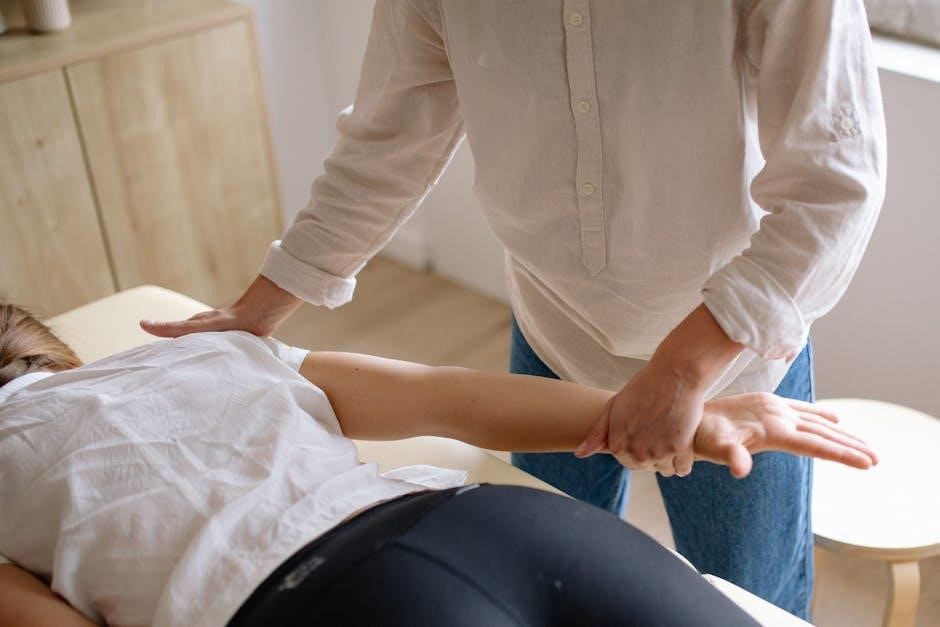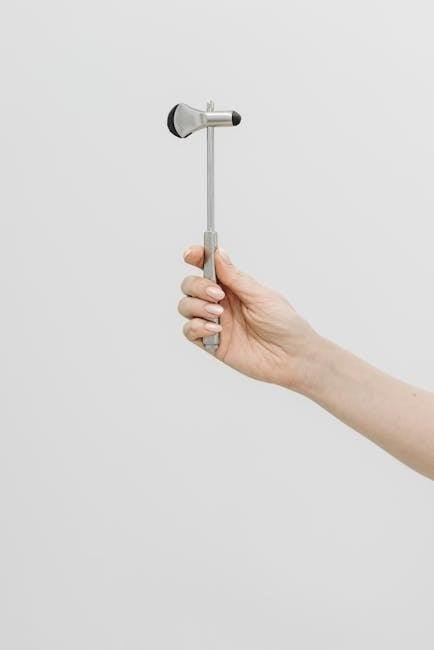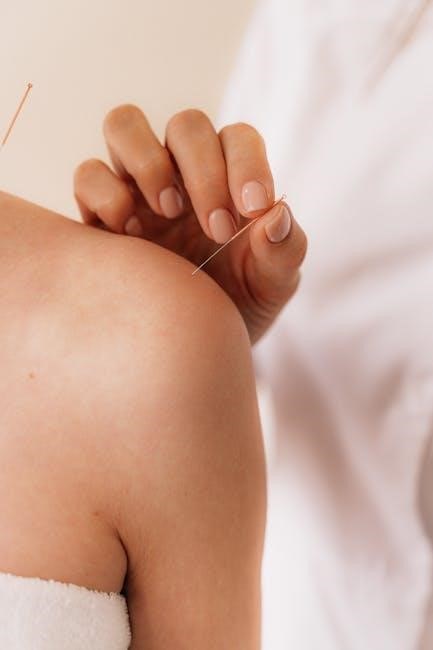
Welcome to the Rhythm Healthcare P2 Manual, your comprehensive guide to understanding and using the P2 Portable Oxygen Concentrator. This manual provides essential information for setup, operation, and maintenance, ensuring safe and effective use of the device. By following the guidelines outlined, users can optimize performance and troubleshoot common issues effortlessly.
Overview of the Rhythm Healthcare P2 Portable Oxygen Concentrator
The Rhythm Healthcare P2 Portable Oxygen Concentrator is a lightweight, compact device designed for individuals requiring supplemental oxygen therapy. Built for portability and efficiency, the P2 model delivers a reliable oxygen supply, making it ideal for both home and travel use. Its sleek design allows for easy transport, while its advanced pulse flow technology ensures consistent oxygen delivery. The device features an intuitive control panel and an easy-to-read LCD display, providing users with clear information about their oxygen settings and system status. With a focus on user convenience, the P2 is equipped with a rechargeable battery and optional accessories for enhanced mobility. This overview highlights the key aspects of the P2, emphasizing its portability, functionality, and user-friendly design, making it a practical solution for oxygen therapy needs. Regular maintenance and adherence to safety guidelines ensure optimal performance and longevity.
Key Features and Benefits of the P2 Model
The Rhythm Healthcare P2 Portable Oxygen Concentrator offers an array of innovative features designed to enhance user experience and provide reliable oxygen therapy. Its lightweight and compact design ensures easy portability, making it suitable for travel and daily activities. The P2 model incorporates advanced pulse flow technology, delivering consistent oxygen levels tailored to individual needs. The intuitive control panel and clear LCD display allow users to monitor settings and system status effortlessly. Additionally, the device features a rechargeable battery, extending its usability on the go. Optional accessories, such as carry bags and extra filters, further enhance convenience. The P2’s energy-efficient operation and quiet performance make it ideal for home and portable use. These features collectively ensure that the P2 model meets the diverse needs of oxygen therapy users, offering both functionality and ease of use.
Important Safety Guidelines and Precautions
To ensure safe and effective use of the Rhythm Healthcare P2 Portable Oxygen Concentrator, it is crucial to follow specific safety guidelines. Always read the entire manual before operating the device, as improper use can lead to serious health risks. The P2 should only be used in well-ventilated areas, away from flammable materials or open flames. Avoid exposing the device to extreme temperatures or moisture, as this may damage internal components. Regular maintenance is essential to prevent poor operating conditions, which can shorten the concentrator’s lifespan. Never modify or tamper with the device, as this could compromise its safety and functionality; Additionally, ensure all connections are secure and free from damage before use. By adhering to these precautions, users can ensure safe and reliable operation of the Rhythm Healthcare P2.

Setting Up and Installing the Rhythm P2
Setting up the Rhythm P2 is quick and straightforward. Begin by unpacking and placing the device on a flat, stable surface. Connect all components and accessories securely, ensuring proper alignment and tightness. Follow the manual’s step-by-step guide for a seamless installation process.
Step-by-Step Guide to Initial Setup
Start by carefully unpacking the Rhythm P2 and its accessories. Place the unit on a flat, stable surface, ensuring good ventilation. Next, connect the power cord to a suitable outlet and plug in the device. Locate the oxygen outlet and attach the provided tubing securely. Turn on the device and allow it to run for a few minutes to ensure proper function. Check for any leaks in the connections and verify the LCD display shows normal operation. If using additional accessories, such as a humidifier or carry bag, follow the manual’s specific instructions for attachment. Once all components are connected and functioning correctly, the Rhythm P2 is ready for use. Always refer to the manual for detailed instructions and safety precautions.
Connecting Components and Accessories
Begin by unpacking all components, including the oxygen tubing, power cord, and filters. Inspect each item for damage or defects before use. Connect the oxygen tubing to the outlet port on the Rhythm P2, ensuring a secure fit. Plug the power cord into a compatible electrical outlet, making sure it is fully seated. If using a humidifier, attach it to the tubing according to the manual’s instructions. For portable use, connect the DC power connector to a vehicle’s power outlet. Ensure all connections are tight to prevent air leaks. Finally, attach any additional accessories, such as a carry bag or extra filters, as needed. Double-check all connections for stability and proper alignment before turning on the device. This ensures safe and efficient operation of the Rhythm P2 Portable Oxygen Concentrator.

Operating the Rhythm Healthcare P2
Turn on the device by pressing the power button. Select your prescribed flow setting using the control panel. Monitor the LCD display for real-time updates. Ensure smooth operation by maintaining proper airflow and checking for alarms. Adjust settings as needed to meet your oxygen therapy requirements.
Understanding the Control Functions and LCD Display

The Rhythm Healthcare P2 features an intuitive control panel designed for easy operation. The power button initiates the device, while flow controls allow precise adjustment of oxygen levels. The LCD display provides real-time updates on flow rate, system status, and alerts, ensuring users stay informed. Alarms signal issues like high pressure or low oxygen levels, prompting timely action. This clear interface aids in monitoring and customization, enhancing safety and effectiveness. For detailed guidance, downloadable PDF manuals are available, offering comprehensive instructions and troubleshooting tips.
Adjusting Flow Settings for Optimal Performance
Adjusting the flow settings on the Rhythm Healthcare P2 is straightforward, ensuring personalized oxygen delivery. Use the control buttons to increase or decrease the flow rate, visible on the LCD display. The device offers continuous flow settings, allowing users to customize oxygen levels based on their needs. Always consult your healthcare provider to determine the correct flow rate for your condition. The P2 automatically adjusts to maintain consistent oxygen output, even during movement. For optimal performance, monitor the flow rate regularly and adjust as needed. If the LCD display shows a low flow alert, check the tubing for kinks or obstructions. Ensuring proper flow settings is crucial for effective therapy and user comfort. Refer to the user manual for detailed guidance on flow adjustment and troubleshooting tips.

Maintenance and Troubleshooting
Regular maintenance ensures the Rhythm P2 operates efficiently. Clean filters, inspect tubing, and monitor for alarms. Troubleshoot issues like low flow or error codes promptly for optimal performance.
Routine Maintenance and Cleaning Procedures
Regular maintenance is crucial for the longevity and efficiency of the Rhythm P2 Portable Oxygen Concentrator. Start by cleaning the exterior with a soft cloth and mild detergent, ensuring no moisture enters the device. Next, inspect and clean the air filters every 1-2 weeks or as needed. Gently vacuum or replace them according to the manufacturer’s instructions. Check the tubing and connections for any blockages or damage, replacing them if necessary. Additionally, monitor the molecular sieve beds, which typically need replacement every 5 years. Always refer to the user manual for specific guidelines and ensure all maintenance is performed with the device turned off and unplugged. Proper care will ensure consistent performance and safety.
Common Issues and Troubleshooting Tips
Common issues with the Rhythm P2 may include low oxygen flow, alarms, or device malfunction. If the oxygen flow is low, check the tubing for kinks or blockages and ensure the filters are clean. For alarms, refer to the LCD display for error codes and address the issue accordingly. If the device powers off unexpectedly, ensure it is properly charged or plugged into a power source. Regularly cleaning the filters and molecular sieve beds can prevent many issues. If problems persist, reset the device by turning it off and on again. Always consult the manual for specific troubleshooting steps, and avoid using the device in poor conditions, as this can shorten its lifespan. Proper maintenance and adherence to guidelines will help resolve most issues effectively.